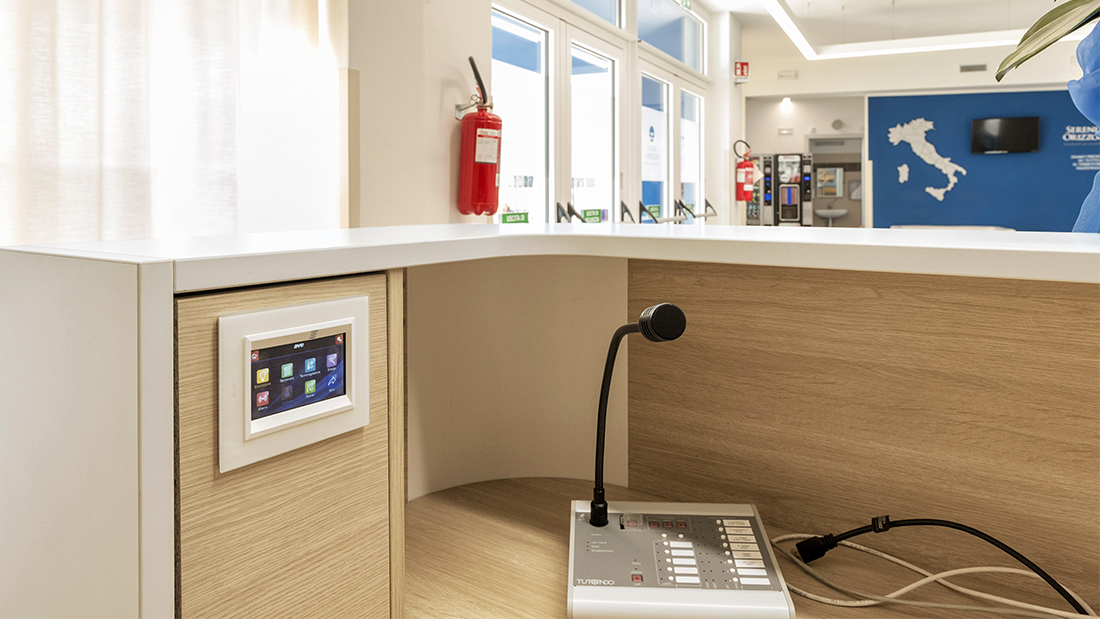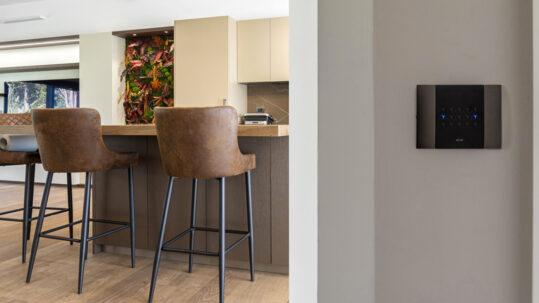
17 Jul AVE home automation nursing call system
With AVE it’s possible to create a highly performing home automation nursing call system, thanks to the exceptional flexibility of DOMINA Smart IoT home automation. The result is a system that simplifies and facilitates the management and supervision of two different types of calls (emergency and service) that comes from the areas or departments of the monitored building.
The AVE home automation nursing call system takes advantage of the “bus” wiring architecture (typical of home automation), allowing the realization of an advanced system that integrates
- local call and identification terminals
- optical-acoustic signalling devices
- supervision terminals.
How it works: emergency and service calls
Each time a local call is activated – by acting on the pull button or by the extractable call terminal for the management from one to three buttons (cod. CALLP01N, CALL02P, CALL03P) – it’s addressed to the home automation “bus” which, almost simultaneously, activates the optical-acoustic signals outside the room and the general one:
- In the case of emergency calls, the visual and sound signals is activeted in the corridor and the visual signal corresponding to the caller’s number on the supervision devices in the reception. The sounder emits a flashing visual signal and a sound dedicated to emergency calls.
- In the case of service calls, the visual and sound signals is activeted in the corridor and the visual signal corresponding to the caller’s number on the supervision devices in the reception. The sounder emits a continuous visual signal and a sound dedicated to the service calls (different from the sound of the emergency call). In addition, an optical green visual signal is turned on.
Touch Screen and web supervision
The home automation Nurse calling system requires each department is monitored with distributed logic through the innovative Touch Screen supervisor TS01. It’s possible to keep the entire structure under control, either directly from the local display through a stylized graphic interface, or through practical customizable graphic maps able to return a graphic representation of the building that can be consulted via web pages, thus allowing you to view comfortably the status of each room and manage the system. If a call occurs, in addition to local and general signals, the home automation supervisor records the event in the “Alarm list” identifying the date, hours and representing the room from which it started.

The department is monitored and managed by a local supervisor who constantly checks the correct functioning of the home automation modules connected to it by signalling acoustically and visually any faults and/or calls through internal buzzer and turn on the display with the alarm. It also replicates this information to the home automation modules and the acoustical signalling. These signals must be acknowledged by an appropriate manoeuvre performed on the local display.
The entire building is supervised by a central point using a web browser connected via a TCP/IP connection to the technology hub (code 53WBS-HUB). Through the web interface generated by it, you can see what it’s happening inside the building and consult the events history. You can also combine one or more areas of the building so that a local area supervisor is able to notify the calls of others who are unsupervised in that moment.
The home automation nursing call system developed by AVE excels in terms of reliability, usability, supervision and security: the perfect solution for nursing homes and social-assistance buildings, where there is the need for the calls’ supervision, but also the integration with the home automation system for better building management and energy saving.
LATEST NEWS
AVE Technology in an Italian Smart Villa
AVE technology revolutionizes the concept of smart homes, combining innovation, design, and functionality to create comf...
AVE Home Automation: Innovation Making Pharmacies Smarter
The potential and flexibility of AVE home automation extend beyond the home, transforming various environments into inte...











